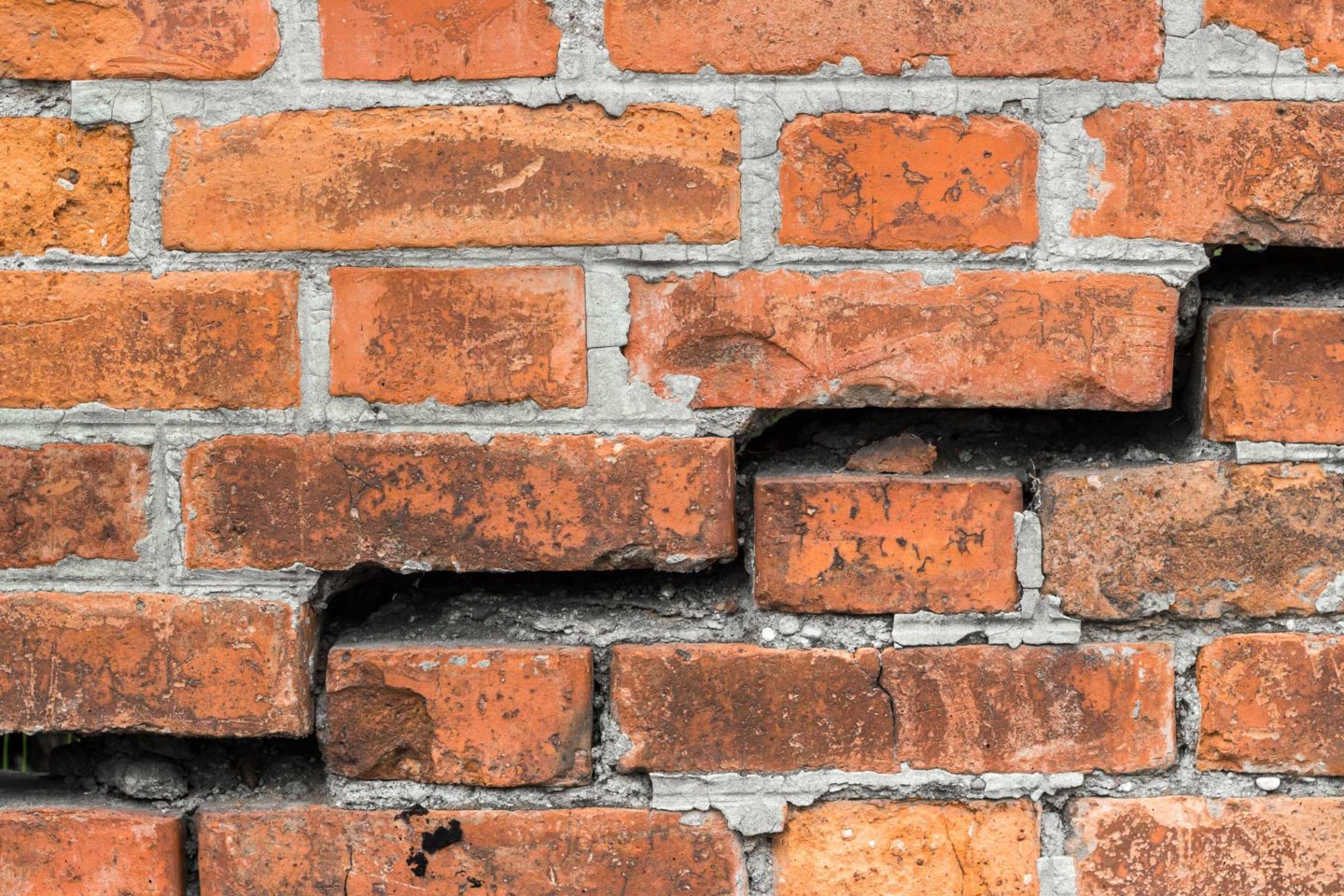Top 5 Causes of Masonry Damage
Brick and stone are the sturdiest, most durable building materials we have. Masonry resists fire, rot, insect infestation, and mildew. That doesn’t mean it’s indestructible, however. Even the strongest brick and stone structures can be damaged by wear, age and other forces. Here are the most common causes of masonry damage and what you can do to fix them.
Top Causes of Masonry Damage
1. Water and Moisture
Water damage caused by leaks is the major cause of masonry problems like spalling, a condition where bricks start to pop loose from their mortar. Years of freeze-and-thaw cycles coupled with rain will eventually wear away at the stone. Undetected leaks after rainfall or snowstorm can build up behind the mortar and cause it to deteriorate.
Weather isn’t the only culprit. Using a power washer can loosen mortar and damage the surface of brick or stone. Avoid using high-pressure washers or abrasive cleaning agents on stone or brick.
2. Improper Installation
Improper installation or repairs can cause masonry structures to buckle and shift. If the proper base hasn’t been put down for a larger structure, this problem can be especially serious. Poorly-laid mortar will deteriorate quickly. When you’re having masonry built or repaired, make sure to use certified masonry professionals.
3. Earthquake Damage
Earthquakes are among the few natural forces that can cause serious damage to masonry structures. In the Virginia, Maryland, and D.C. areas, we don’t have to worry too much about this particular problem. Just bear in mind that any storm or natural event that causes structural damage can also harm masonry.
4. Negligence
Masonry can fall into serious disrepair if signs of damage are not repaired right away. Damage usually begins as cracks on the masonry wall’s surface. Eventually, these fine cracks grow longer and cause the mortar to deteriorate. Over time, bricks and stones start coming loose from the mortar. Cracks, water damage, gaps, and crumbling bricks should be repaired as soon as you see them.
5. Ice Melt Chemicals
The chemicals used in ice melts can be highly damaging to masonry. They usually contain high amounts of sodium chloride. This chemical is so strong that it can also cause peeling and chipping in concrete.
Some formulas of ice melt contain magnesium rather than sodium chloride. This is less harsh, but it is still not ideal for use on masonry. If you have to use ice melt, be certain to sweep the chemicals away and wash your masonry surfaces thoroughly afterward.
Common Fixes for Masonry Problems
Tuckpointing. This is a detailed, painstaking repair job that involves removing damaged, old mortar and replacing it with fresh material. This is a highly-skilled job that requires specialized masonry knowledge.
Refacing. Stone and brick refacing restores the look of chipping, peeling or worn structures. It can be done on a fireplace surround, chimney or wall. Masons replace the damaged stones with new materials. They might also use veneers to create a masonry look that is lightweight and easy to install.
Proper sealant. Brick and some stones are able to shed water through their natural composition. If your masonry repair expert suggests applying a sealant to brick, make sure that it is a breathable sealant. Brick can be damaged by an impermeable sealant that allows water to stay trapped in the brick’s pores.
Chimney restoration. Chimneys can often develop cracks in their crowns. This ruins the look of the chimney and can also make it unsafe to use. A crown restoration restores the look of your chimney and prevents further damage.
Call the Masonry Experts
If you’ve noticed cracks or gaps in your masonry, call the experts at Capital Masonry. We are a third-generation masonry founded on the principles of honesty, integrity, professionalism, punctuality, and responsiveness. You can count on us for all your masonry needs.
